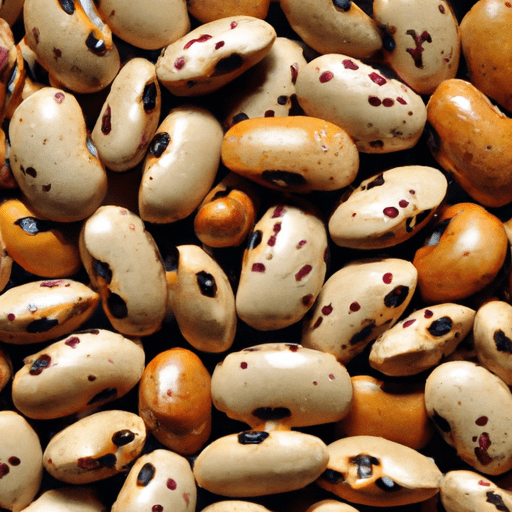Exploring the Versatile World of Dried Navy Beans
When it comes to pantry staples, dried navy beans often find a permanent place in many kitchens worldwide. With their rich history, incredible nutritional value, and endless culinary potential, these unassuming legumes deserve a closer look. So, grab your apron and let’s dive into the versatile world of dried navy beans!
Taste and Texture
Dried navy beans, also known as haricot beans, possess a mild, buttery flavor. Their tender texture allows them to either hold their shape when cooked briefly or turn into a creamy delight when simmered for longer periods. This remarkable versatility makes them a sought-after addition to numerous culinary creations.
Common Uses in Cooking
Dried navy beans have been a culinary superstar for centuries in various cuisines around the world. From soups and stews to salads and side dishes, their adaptability knows no bounds. Here are a few common uses in cooking that highlight their flavors and textures:
1. Classic Navy Bean Soup: These beans shine when turned into a comforting soup. Simmered with aromatic vegetables, herbs, and perhaps a ham hock or bacon, they transform into a bowl of silky goodness that warms the soul.
2. Boston Baked Beans: A staple in traditional New England cuisine, dried navy beans are essential for creating the iconic Boston Baked Beans. Slow-cooked with molasses, brown sugar, and a touch of mustard, they become a subtly sweet and savory accompaniment to meats or a star of their own.
3. White Bean Dip: Blending cooked navy beans with garlic, lemon juice, and olive oil results in a delectable dip perfect for snacking. Serve it with crispy pita chips or fresh veggies for an appetizer that is sure to please.
4. Bean Salads: Navy beans’ creamy texture works wonderfully in salads. Combine them with fresh herbs, cherry tomatoes, red onions, and a zesty vinaigrette for a refreshing and protein-packed dish.
Nutritional Value
Beyond their delicious taste, dried navy beans boast an impressive nutritional profile, making them an excellent addition to a healthy diet. Here are a few key nutritional highlights:
Fiber Powerhouse: Navy beans are a great source of dietary fiber, with around 19 grams per cup. Fiber aids digestion, promotes satiety, and supports a healthy heart.
Protein-Rich: With approximately 15 grams of protein per cup, these little legumes pack a considerable protein punch. Including navy beans in your meals can help meet your daily protein needs, particularly for vegetarians and vegans.
Abundant Micronutrients: Dried navy beans also contain important micronutrients such as folate, manganese, potassium, and iron. These nutrients play vital roles in energy production, red blood cell formation, and maintaining overall health.
History and Interesting Facts
Dried navy beans have a fascinating history that dates back centuries. Originating in South America, they were brought to Europe by Spanish explorers during the 15th and 16th centuries. They eventually made their way to North America, where they became a staple during the American Civil War due to their affordability and long shelf life.
The name “navy beans” originates from their extensive use in the United States Navy, where they were a dietary staple for sailors on long voyages. An interesting tidbit is that these beans reportedly gained popularity after being used to make a hearty stew known as “Navy Bean Soup” in the United States Senate cafeteria.
Final Thoughts
Dried navy beans are a versatile ingredient that can elevate a wide array of dishes. Their creamy texture and delicate flavor make them a favorite in both comfort foods and healthy dishes alike. So, next time you’re searching for an ingredient that combines versatility, nutrition, and taste, grab a bag of dried navy beans and let your culinary creativity blossom!
Dried Navy Beans
Origin and Common Uses:
- Navy beans, scientifically known as Phaseolus vulgaris, are small, oval-shaped beans that are native to North America. They were introduced to Europe in the 16th century as a result of the Columbian Exchange.
- Navy beans got their name from being a staple in the diet of the United States Navy during the early 20th century.
- These beans are widely used in a variety of culinary traditions and dishes, including soups, stews, chili, and salads.
- In the United States, navy beans are commonly used to make baked beans as they hold their shape well and have a mild flavor that pairs well with smoky ingredients like bacon or ham.
Nutritional Benefits:
- Navy beans are an excellent source of vegetarian protein, providing around 15 grams per cooked cup.
- They are low in fat and contain no cholesterol, making them a healthy protein option.
- Navy beans are loaded with dietary fiber, with one cup providing approximately 19 grams, aiding digestion and promoting a feeling of fullness.
- They are a good source of minerals like iron, potassium, and magnesium, as well as B vitamins such as thiamin and folate.
Unique Properties and Historical Significance:
- Navy beans have a creamy, delicate flavor and a smooth texture when cooked.
- They are well-known for their ability to absorb flavors from other ingredients, making them an ideal choice for soups and stews.
- During World War I, navy beans were shipped in large quantities to Europe as part of food aid efforts due to their high nutrient content and long shelf life.
- In the Caribbean, navy beans are used to make the popular dish called “rice and peas,” where the beans are cooked with rice and coconut milk, infused with seasonings like thyme and scotch bonnet peppers.
- The traditional Roman dish, pasta e fagioli, features navy beans as a key ingredient, cooked with pasta, vegetables, and sometimes meat, resulting in a hearty and flavorful dish.
Sourced from culinary history, nutrition databases, and culinary references.




Use the share button below if you liked it.
It makes me smile, when I see it.